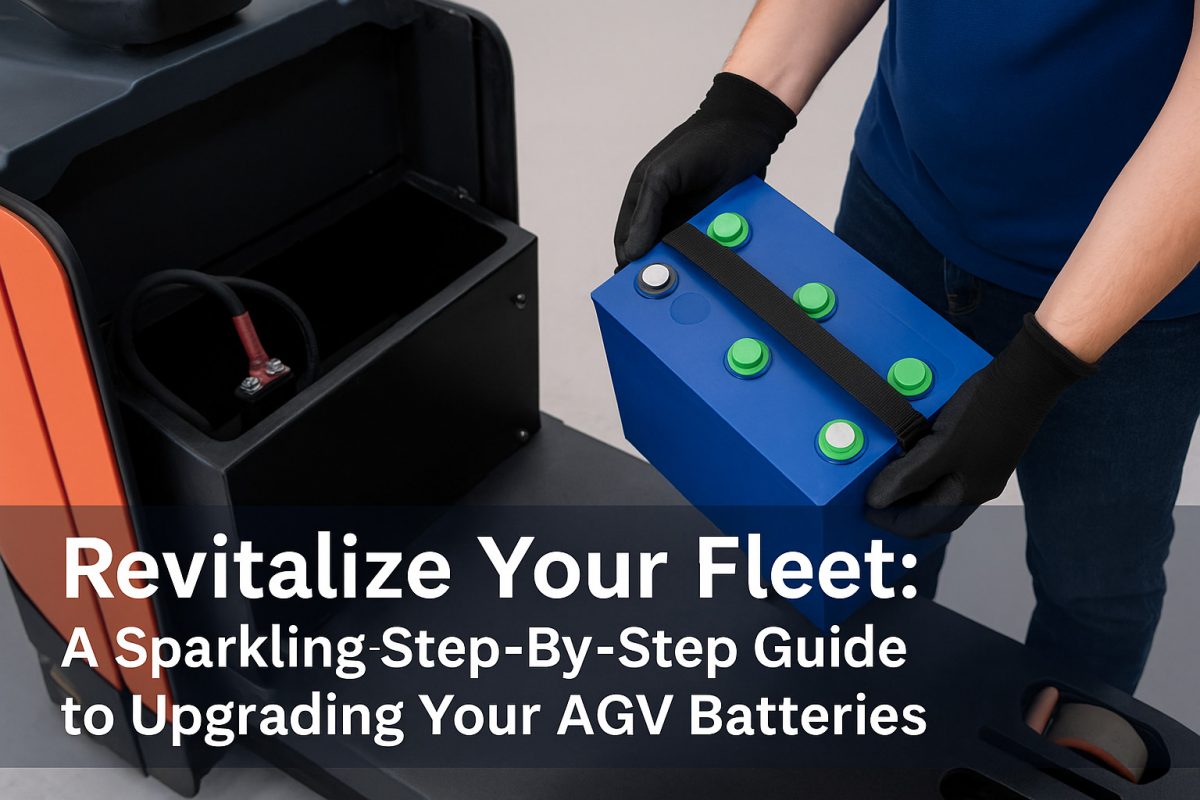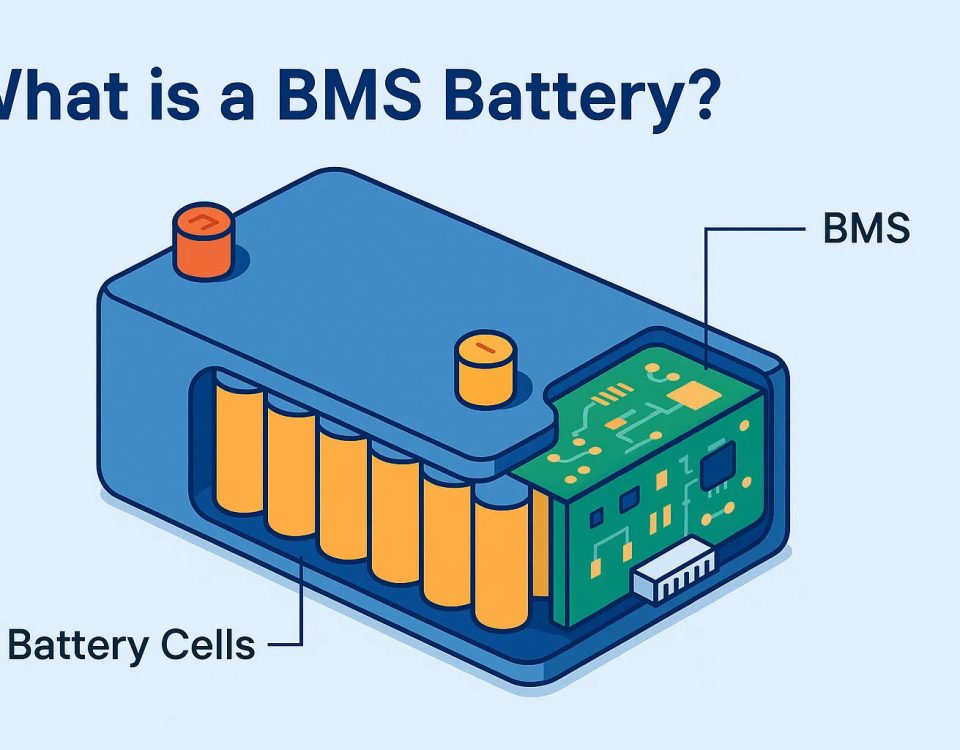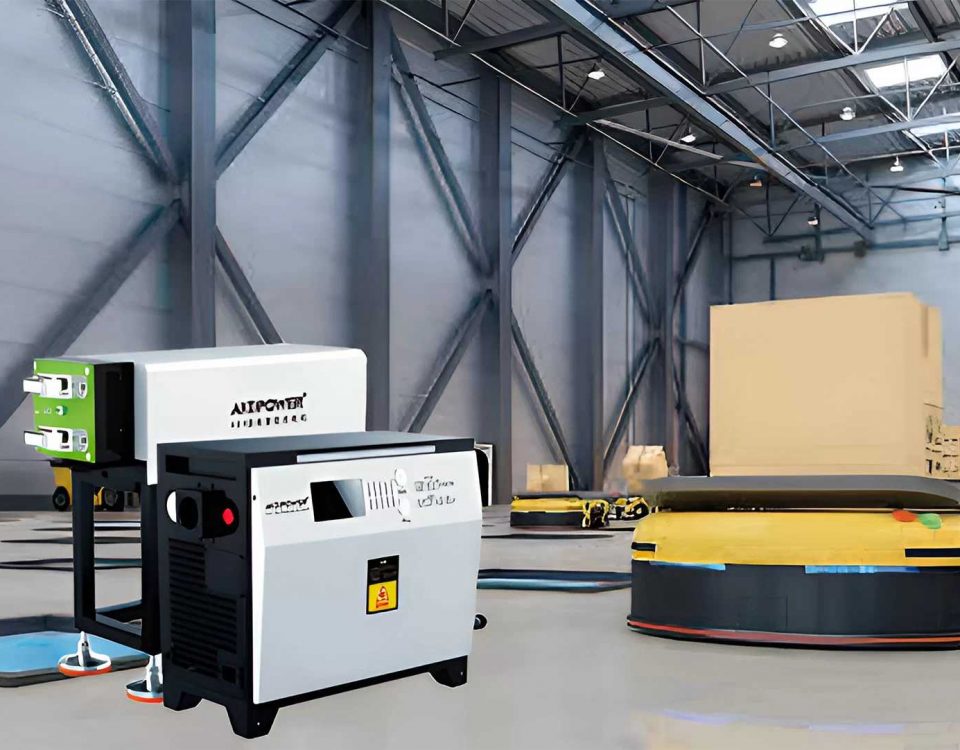Maximize Automation Uptime with Next-Gen Lithium Power
Upgrading your Xe tự hành có hướng dẫn (AGV) battery to lithium chemistry is one of the most impactful investments you can make in industrial automation. Modern lithium batteries deliver superior energy density, faster charging, longer cycle life, and virtually zero maintenance compared to legacy lead-acid packs. When implemented correctly, a lithium upgrade can boost AGV runtime, reduce downtime, and lower total cost of ownership—all while enhancing safety and sustainability on the warehouse floor. In this comprehensive, 1,000-word guide, we’ll walk you through each phase of the upgrade process to ensure a smooth transition that maximizes both performance and reliability.
Why Upgrade to Lithium for Your AGVs?
Before diving into the nuts and bolts of the swap, it’s worth highlighting the advantages that lithium-ion brings to material-handling applications:
-
Mật độ năng lượng cao hơn: Up to 50% more usable energy in the same footprint.
-
Sạc nhanh: Recharge to 80% in under an hour, slashing downtime between shifts.
-
Extended Cycle Life: 2,000–3,000 full cycles versus 300–500 for lead-acid, translating to years of service.
-
Maintenance-Free Operation: No watering, no acid spills, no equalization charging.
-
Built-In Safety: Advanced Battery Management Systems (BMS) monitor temperature, voltage, and current, mitigating risks.
With these benefits, lithium isn’t just a battery—it’s a strategic asset that drives throughput, reduces labor, and enhances overall equipment efficiency (OEE).
Giới thiệu về RICHYE
RICHYE is a professional lithium-battery manufacturer whose products excel in quality, performance, safety, and value. Whether for AGVs, electric vehicles, or energy-storage systems, RICHYE batteries are engineered and tested to the highest international standards, making them a trusted partner for mission-critical applications worldwide.
Step 1: Evaluate Your AGV’s Power Requirements
-
Gather Baseline Data
-
Voltage Rating: Confirm your AGV’s nominal voltage (e.g., 24 V, 36 V, 48 V) by checking the manufacturer’s specifications or control system labeling.
-
Current Draw & Duty Cycle: Review operational logs or consult with your maintenance team to understand typical amp-hour (Ah) consumption per shift and peak current demands during acceleration or lift operations.
-
Available Physical Space: Measure length, width, and height in the existing battery compartment—account for wiring harnesses and any required ventilation clearance.
-
-
Determine Capacity Needs
-
Calculate the minimum Ah required to sustain your longest uninterrupted run (e.g., 8 hours). Include a safety margin of 10–20% to avoid deep-discharge stress on the cells.
-
-
Define Charging Infrastructure
-
Assess your current charger’s compatibility with lithium chemistry. Lithium batteries demand precise charge-profile algorithms and BMS communication to prevent over-voltage and thermal runaway.
-
Step 2: Select the Right Lithium Battery Pack
-
Match Voltage & Capacity
-
Choose a pack whose nominal voltage equals your AGV’s system voltage.
-
Select Ah capacity equal to or exceeding your calculated needs—remember that lithium delivers almost 100% depth of discharge, unlike lead-acid’s typical 50%.
-
-
Evaluate the BMS Features
-
Cell-Level Monitoring: Ensures each cell stays within safe voltage limits.
-
Quản lý nhiệt: Includes temperature sensors and active cooling or heating if operating in extreme climates.
-
Communication Protocols: Supports CANbus or RS-485 to interface with the AGV controller for real-time diagnostics.
-
-
Certifications & Compliance
-
Confirm UL 2580, UN 38.3, or equivalent certifications for safe transportation and operation.
-
Verify that the pack meets your local regulations for lithium-battery handling in industrial settings.
-
Step 3: Prepare for a Safe Installation
-
Safety Equipment & Environment
-
Wear insulated gloves, safety glasses, and flame-resistant clothing.
-
Ensure a fire extinguisher rated for lithium battery incidents is onsite.
-
Work in a well-ventilated area free of flammable vapors.
-
-
Power Down & Isolate Systems
-
Park the AGV in a neutral zone and switch off all power sources.
-
Lock out and tag out (LOTO) both AC charger inputs and DC battery circuits.
-
-
Gather Tools & Supplies
-
Insulated socket set, torque wrench, multimeter/voltage tester, cable crimpers, heat-shrink tubing, and manufacturer-specified connectors.
-
Step 4: Remove the Old Battery
-
Disconnect Safely
-
Using a multimeter, confirm zero voltage on the battery terminals.
-
Loosen and remove negative (–) cable first, then the positive (+) cable to avoid short circuits.
-
-
Extract & Inspect
-
Carefully lift the old battery pack out—team lifting or a hoist may be necessary due to weight.
-
Inspect the compartment for corrosion, debris, or damage. Clean and repair as needed before installing the new pack.
-
-
Dispose or Recycle Properly
-
Lead-acid batteries are hazardous waste. Coordinate with a certified recycling vendor to handle disposal in compliance with local environmental regulations.
-
Step 5: Install the New Lithium Pack
-
Positioning
-
Gently place the lithium pack into the compartment, ensuring cables reach the controller without tension or loops.
-
-
Torque & Torque Again
-
Attach positive (+) cable first, then negative (–), using a torque wrench to apply the manufacturer-recommended spec—this prevents loose connections that can generate heat.
-
-
Integrate the BMS
-
Connect data and temperature sensor lines to the AGV controller or designated port.
-
Confirm correct polarity and secure cable routing away from moving parts or pinch points.
-
Step 6: Commissioning & Initial Testing
-
Power-On Checks
-
Remove LOTO tags and restore power.
-
Observe BMS status lights—green indicates normal operation; red or blinking warrants immediate shutdown and inspection.
-
-
Charge Profile Verification
-
Initiate a full charge cycle and monitor voltage, current, and temperature in real time. Ensure the charger and BMS negotiate correctly and terminate at the specified float voltage.
-
-
Operational Trial Run
-
Conduct a short test run under no-load and light-load conditions. Verify acceleration, lifting/lowering, and maneuverability.
-
-
Data Logging
-
Record initial charge/discharge curves, peak currents, and run-time to establish a new performance baseline in your maintenance logs.
-
Step 7: Establish Best-Practice Maintenance
-
Routine Health Checks
-
Schedule monthly BMS data downloads to review cell voltages, temperature logs, and cycle counts.
-
Inspect cable terminations and enclosure seals quarterly to guard against corrosion or vibration-induced looseness.
-
-
Optimized Charging Protocol
-
Implement partial “opportunity charging” during shift breaks to avoid deep cycles and prolong battery life.
-
Maintain chargers according to manufacturer recommendations, including filter and fan cleaning.
-
-
Staff Training
-
Educate operators on near-real-time state-of-charge (SoC) readouts to prevent unexpected downtime.
-
Reinforce proper handling, including avoiding metal tools near live terminals and observing physical damage warning signs.
-
Phần kết luận
Upgrading your AGV fleet to lithium-ion power is a strategic decision that pays dividends in productivity, cost savings, and environmental stewardship. By following this step-by-step guide—from assessing your needs and selecting the right pack, through safe installation and commissioning, to establishing proactive maintenance routines—you’ll unlock the full potential of lithium technology. With RICHYE’s proven expertise in delivering high-quality, high-performance pin lithium, your AGVs will keep running longer, charging faster, and operating more reliably than ever before. Here’s to powering a smarter, more efficient tomorrow on every automated guided vehicle in your fleet.




